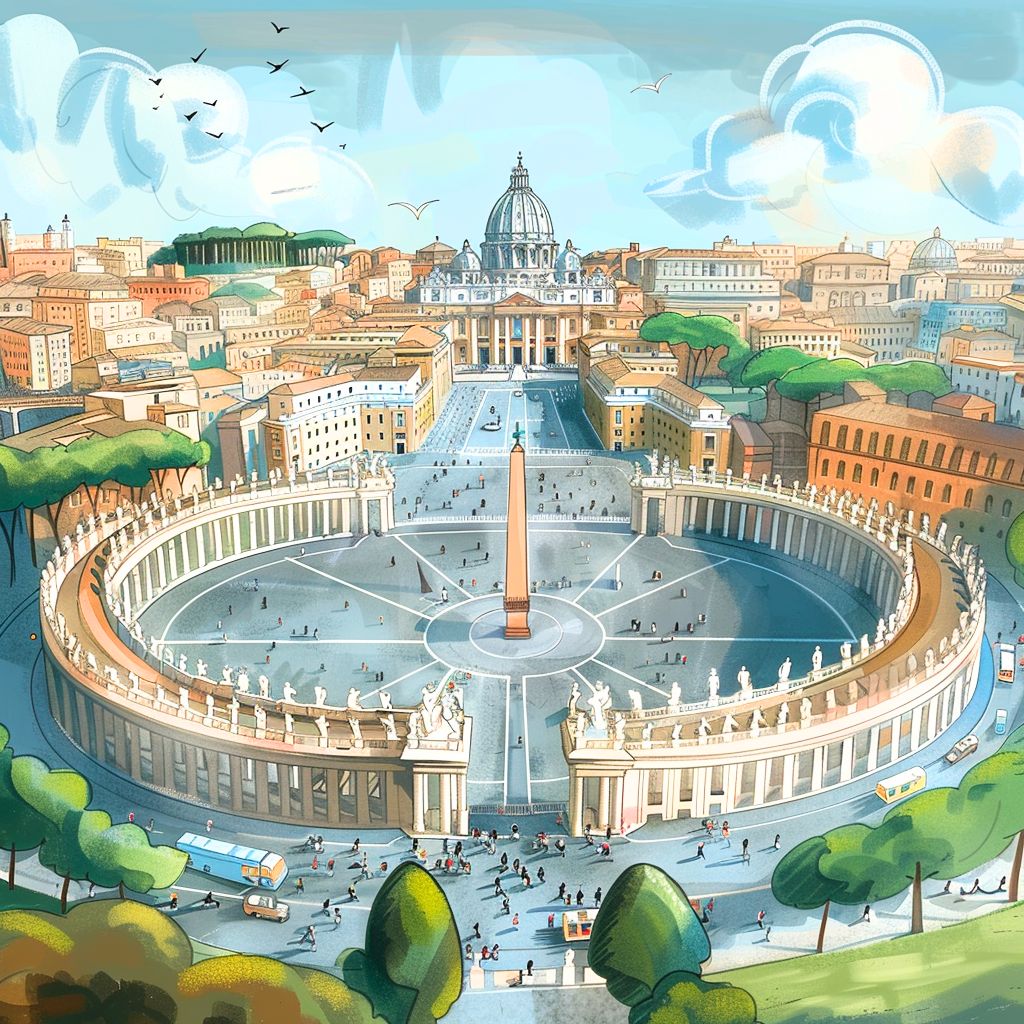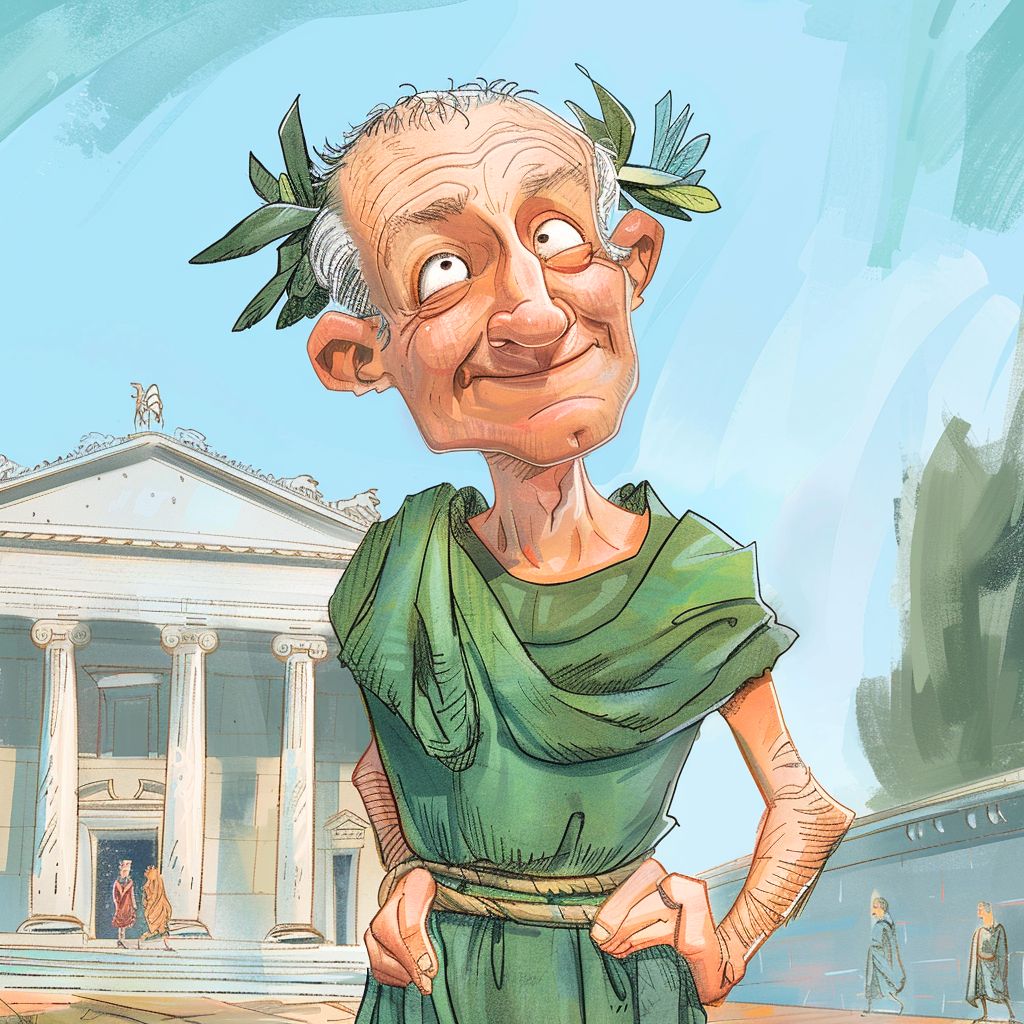Latin, the language of the Romans, has a fascinating history and an enduring legacy. Despite being considered a “dead language,” its influence persists in many areas of modern life.
Here are 21 fun facts about Latin, expanded and engagingly detailed:
1. Not Quite Dead
Latin is often referred to as a dead language, meaning it’s no longer spoken as a native language. However, this label doesn’t tell the whole story. Latin is still very much alive in specific contexts. For instance, the Roman Catholic Church continues to use Latin for its official documents, liturgies, and even the Pope’s Twitter account! Yes, you can find papal tweets in Latin. Latin is also prevalent in academic and scientific communities, especially in disciplines like medicine and biology, where Latin terminology is foundational. So, while you won’t hear Latin in everyday conversation, it’s far from being extinct.
2. Romance Languages
Did you know that Latin is the grandparent of the Romance languages? Italian, Spanish, French, Portuguese, and Romanian all trace their roots back to Vulgar Latin, which was the colloquial speech of the common people in the Roman Empire. When the empire fell, these regional dialects evolved independently, gradually morphing into the distinct languages we recognize today. So, when you’re speaking any of these languages, you’re essentially speaking a modern version of Latin. It’s like having a linguistic time machine that connects us directly to ancient Rome!
3. Scientific Naming
Ever wonder why so many plant and animal species have those long, fancy Latin names? That’s because Latin is the language of taxonomy, the system scientists use to classify all living things. This system, known as binomial nomenclature, was developed by Carl Linnaeus in the 18th century. It gives each species a unique, universally accepted name, ensuring that scientists around the world can communicate clearly about each organism. For example, the common house cat is known as Felis catus in scientific circles. Using Latin helps avoid the confusion that might arise from regional names and keeps the naming process standardized and precise.
4. Legal Latin
The legal world is full of Latin phrases that have stood the test of time. Terms like “habeas corpus” (you shall have the body) and “subpoena” (under penalty) are just a couple of examples that are still in use today. These phrases date back to when Latin was the language of the Roman Empire, whose legal system has heavily influenced modern law. Using Latin in legal contexts adds a sense of formality and tradition, creating a link to the ancient roots of our legal systems. So, next time you hear a legal term in Latin, you’re hearing echoes of centuries-old practices.
5. Mottoes and Phrases
Latin phrases have a way of capturing timeless values and ideas, which is why so many institutions use them as mottos. For instance, “E Pluribus Unum” (Out of Many, One) is found on the Great Seal of the United States, reflecting the unity of a diverse nation. Universities, too, often adopt Latin mottos to convey their mission and ideals. Take Harvard’s “Veritas” (Truth) or Oxford’s “Dominus Illuminatio Mea” (The Lord is My Light). Even in daily life, phrases like “Carpe Diem” (Seize the Day) remind us to make the most of every moment. These mottos and phrases connect us to the wisdom of the past, lending a sense of gravitas and continuity to our words and actions.
6. Latin Alphabet
The Latin alphabet is the foundation of the alphabets used by many languages around the world today, including English. This alphabet, which originated in ancient Rome, consists of 23 letters (the letters J, U, and W were added later in the medieval period). The spread of the Roman Empire helped disseminate the Latin script across Europe, where it adapted to suit various languages. The simplicity and adaptability of the Latin alphabet have made it incredibly resilient, and it’s now used by more than half of the world’s languages. From literature and science to everyday communication, the Latin alphabet is an essential tool in our modern world, all thanks to the ingenuity of the ancient Romans.
7. Vatican City
The tiny Vatican City, the world’s smallest independent state, is the heart of the Roman Catholic Church. Latin is its official language, used in all formal communications and documents. Even today, new Papal encyclicals are written in Latin, and important church decrees are issued in this ancient tongue. Interestingly, the Vatican even has Latin-speaking ATM machines! This commitment to Latin helps preserve a sense of continuity and tradition within the Church, linking today’s practices with those of the early Christian community. So, while Latin may be considered a dead language in everyday life, in the Vatican, it’s very much alive and integral to daily operations.
8. Timeless Literature
Some of the most enduring works of literature were written in Latin. Think of Virgil’s epic poem “The Aeneid,” which tells the legendary story of Aeneas and the founding of Rome. Cicero’s speeches and philosophical works are still studied for their rhetorical brilliance. Ovid’s “Metamorphoses,” with its tales of transformation, has inspired countless writers and artists over the centuries. These texts are not only literary masterpieces but also provide a window into the thoughts, values, and stories of ancient Rome. By reading these works, we connect with a world long past, yet remarkably influential in shaping Western culture and thought.
9. Latin Roots
A huge portion of the English vocabulary is derived from Latin, particularly in fields like law, medicine, science, and technology. Words like “laboratory,” “justice,” and “university” all have Latin origins. Even common words like “animal,” “color,” and “video” come from Latin. Knowing Latin roots can help you decipher the meanings of unfamiliar words and improve your vocabulary. For instance, if you know that “aquatic” comes from the Latin word “aqua,” meaning water, you can easily guess that it has something to do with water. So, a little knowledge of Latin can go a long way in boosting your English skills!
10. Medieval Latin
After the fall of the Roman Empire, Latin didn’t just disappear. Instead, it transformed into Medieval Latin, which was used by scholars, clergy, and the educated elite throughout Europe. This form of Latin was slightly different from the Classical Latin of ancient Rome, adapting over the centuries to meet the needs of its users. Medieval Latin was the language of education, science, philosophy, and religion, bridging the gap between the ancient and modern worlds. It was during this time that many important texts, including religious writings, scientific treatises, and legal documents, were written and preserved in Latin, ensuring the language’s continued influence on Western culture.
11. Classical vs. Vulgar
There were two main types of Latin: Classical Latin and Vulgar Latin. Classical Latin was the formal language of literature, government, and educated discourse. It was used by writers like Cicero and Virgil and was characterized by its complex grammar and refined vocabulary.
On the other hand, Vulgar Latin was the everyday spoken language of the common people. It was less formal, with simpler grammar and a more colloquial vocabulary. Over time, as the Roman Empire expanded and later fell, Vulgar Latin evolved into the various Romance languages we know today, such as Italian, Spanish, French, Portuguese, and Romanian. So, while Classical Latin gives us a glimpse into the elite culture of ancient Rome, Vulgar Latin is the true ancestor of many modern European languages.
12. Evolving Language
Latin left its mark on many Germanic languages, including English. This influence became particularly pronounced after the Norman Conquest of England in 1066. When the Normans, who spoke a French heavily influenced by Latin, took control of England, they brought a wealth of Latin-based vocabulary with them. This blending of Norman French and Old English gave rise to Middle English, which later evolved into the Modern English we speak today. As a result, English is rich in Latin-derived words, especially in fields like law, medicine, science, and art. This linguistic blending has given English a unique character, with a vocabulary that draws from both its Germanic roots and its Latin influences.
13. Lingua Franca
During the Middle Ages and the Renaissance, Latin was the lingua franca, or the common language, of educated people across Europe. Scholars, scientists, and theologians from different countries used Latin to communicate, ensuring that their ideas could be shared and understood regardless of their native tongue. Universities and centers of learning, like the University of Paris and Oxford, conducted their lectures and wrote their texts in Latin. This use of a common language facilitated the spread of knowledge and cultural exchange, making Latin a vital tool for intellectual and scientific advancement during these periods. So, while Latin wasn’t the everyday language of most people, it was the key to unlocking the vast treasury of medieval and Renaissance learning.
14. Philosophical Works
Latin was the language of many seminal philosophical works, particularly during the early Christian era and the Middle Ages. St. Augustine wrote his “Confessions” and “City of God” in Latin, exploring profound theological and philosophical questions that shaped Western thought. Thomas Aquinas’ “Summa Theologica,” a cornerstone of Catholic doctrine and philosophy, was also written in Latin. These texts delve into complex ideas about existence, morality, and the divine, and their use of Latin made them accessible to scholars across Europe. Reading these works in their original language provides a deeper understanding of their nuances and the intellectual context of their time.
15. Gregorian Chant
Latin is the traditional language of Gregorian chant, a form of plainchant used in the Roman Catholic liturgy. These chants, named after Pope Gregory I, are characterized by their monophonic, unaccompanied vocal lines. Gregorian chant played a crucial role in the development of Western music, influencing the structure and notation of later musical compositions. The soothing, meditative quality of these chants continues to inspire and move listeners. Even today, Gregorian chant is performed in many churches and monasteries, preserving a link to the ancient traditions of Christian worship and the rich musical heritage of the medieval period.
16. Cursive Origins
Modern cursive handwriting has its roots in the way Latin was written during the medieval period. Medieval scribes developed a more fluid and connected style of writing to speed up the process of copying texts. This style, known as “Carolingian minuscule,” was developed during the reign of Charlemagne and became the standard script for writing Latin across Europe. Over time, this evolved into various forms of cursive writing. The principles of connecting letters and creating a smooth flow are still evident in today’s cursive scripts. So, every time you write in cursive, you’re continuing a tradition that dates back over a thousand years!
17. Latin Inscriptions
Latin inscriptions can be found on countless historic buildings and monuments across Europe and beyond. These inscriptions often commemorate significant events, honor important individuals, or mark the construction of public works. For instance, the famous Roman aqueduct, the Pont du Gard in France, bears an inscription celebrating its builders. Inscriptions on buildings like the Pantheon in Rome or on Roman military monuments give us direct insight into the thoughts, achievements, and everyday life of ancient civilizations. Exploring these inscriptions is like reading ancient messages etched in stone, providing a tangible connection to the past and the enduring legacy of Latin in architecture and public spaces.
18. Latin in Medicine
Latin plays a crucial role in the field of medicine, where it forms the basis of much of the terminology. Medical terms like “femur” (thigh bone), “coronary” (relating to the heart), and “cutaneous” (relating to the skin) all come from Latin. This practice dates back to the Roman Empire when Latin was the lingua franca of educated people, including physicians. Using Latin in medical terminology ensures precision and clarity, as these terms are universally understood by healthcare professionals worldwide. This standardized vocabulary helps avoid misunderstandings and errors in medical practice, making Latin an indispensable part of the medical field even today.
19. Roman Numerals
Latin introduced Roman numerals, which are still used today in various contexts, such as on clocks, in book chapters, and for events like the Super Bowl. The system uses letters from the Latin alphabet: I, V, X, L, C, D, and M represent 1, 5, 10, 50, 100, 500, and 1000, respectively. This numeral system was used throughout the Roman Empire for trade, engineering, and everyday transactions. While it has largely been replaced by Arabic numerals in most applications, Roman numerals are still valued for their classical aesthetic and historical significance. They add a timeless touch to documents, monuments, and other works, keeping the legacy of ancient Rome alive in our daily lives.
20. Language of Scholarship
Latin was the primary language of scholarship and science until the 17th century when vernacular languages began to take over. During the Renaissance, scholars known as humanists revived interest in classical Latin texts, using the language to write on a wide range of subjects, from philosophy and science to literature and art. Prominent figures such as Copernicus, Galileo, and Newton published their groundbreaking works in Latin. This use of a common scholarly language enabled scientists and thinkers from different regions to share their discoveries and ideas without language barriers, fostering a pan-European intellectual community. Even today, Latin terms and phrases remain deeply embedded in scientific nomenclature and academic traditions.
21. Modern Resurgence
In recent years, there has been a modern resurgence in learning Latin, driven by various motivations. Some people study Latin to gain a deeper understanding of classical literature and historical texts. Others are drawn to its logical structure and the intellectual challenge it presents. Latin is also appreciated for its aesthetic beauty and its role in enhancing vocabulary and comprehension in other languages, especially those of the Romance family. Educational programs and online courses have made Latin more accessible than ever, allowing enthusiasts to explore this ancient language at their own pace. This revival reflects a growing appreciation for the cultural and intellectual heritage that Latin represents, proving that this “dead” language still has a vibrant place in the modern world.

Hey fellow Linguaholics! It’s me, Marcel. I am the proud owner of linguaholic.com. Languages have always been my passion and I have studied Linguistics, Computational Linguistics and Sinology at the University of Zurich. It is my utmost pleasure to share with all of you guys what I know about languages and linguistics in general.








